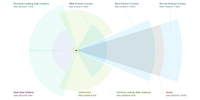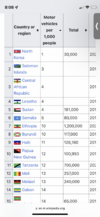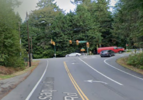ICE lasts as long as their support. It's like an opposite S curve in which in the beginning the transition is slow but there will be a point in which suppliers go bankrupt or pivot to EV parts as everyone loses economy of scale to support ICE. This will happen very quickly when it starts, which means used ICE value has low residual value due to them being paperweight at any given second, or parts become rare and expensive to the point of beyond repair.This is one of the exceedingly rare times when I disagree with an Elon Musk pronouncement.
First, 'residual value' has nothing to do with 'resale value'. Residual value is a contractual termination value in a lease or 'baloon payment' loan. In the contract the amortization si for the total contract value less the 'residual value'. Resale value is what the collateral sells for at the end of the contract.
The only comparable event in recent decades was the replacement of piston aircraft by turboprops first, then by turbojets. The old pistons did have values plummet, but they were largely recycled to less developed areas, so did not lose anything close to all their value. There is data existing on that transition, mostly within ancient archives of aircraft financiers and manufacturers. That was not the financial catastrophe that would ahem been expected.
So, too, there is a deeply 'first world bias' in this assumption. Much of the world population lives in poor conditions that have no reliable electrical supply at all. Despite they Chinese ability to put BEV charging at the Mount Everest Base Camp, most of Africa, South America, and Asia will absorb used ICE for decades to come.
I really wish this were not so. However, many regions largely remain as they were before the industrial revolution, often with a handful of modern accoutrements but nothing much more. Thus, the BEV adopters will not junk their ICE, they'll just export the pollutants to poor people. It will be as it has ever been.
Again, I wish it were not so.
It's like the beginning of the S curve for Tesla in which they "needed parts that doesn't exist". The other end of the upside down S curve for ICE.






